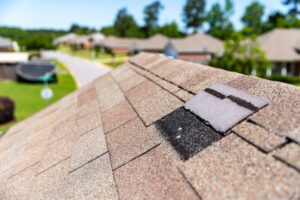Leaking Roof Adelaide: Causes of a Leaking Roof
Once you find that your roof is leaking, it’s essential that you act quickly. Otherwise, property damage and health hazards, including mould and mildew growth could occur as a result.
First, locate the leak source. One way of doing so is tracing water stains on the ceiling, or you could try wetting down your roof with water from a garden hose.
Clogged Gutters
 Clogged gutters can lead to many different leaking roof Adelaide issues for both the exterior and interior of your home, from mould growth to costly repairs that compromise its value and appearance.
Clogged gutters can lead to many different leaking roof Adelaide issues for both the exterior and interior of your home, from mould growth to costly repairs that compromise its value and appearance.
Gutter debris accumulates quickly on roofs, especially at valley junctions, leading to backflow of rainwater into your attic and even walls and ceilings. Clogs caused by gutter debris can prevent rainwater from moving freely off your roof into its proper place – thus flooding it back down onto you or seeping into walls and ceilings.
Gutters are designed to direct rainwater away from your property using downspouts. If there’s standing water near or on your property, or dirt washing away as soon as it rains, this may be a telltale sign that your gutters have become blocked up and need clearing out.
Clogged gutters can also lead to fascia board damage. Nail-on fascia boards adorning the top of walls are attached by large clogs that expose them to excess moisture, leading to rotted wood and eventual structural cracking – creating unstable foundations and making your home less secure than it should be.
Damaged Flashing
One of the primary factors contributing to roof leaks is damaged flashing, often as a result of improper installation or severe storms. Flashing damage may also arise over time due to wear-and-tear, ageing or general wear and tear.
Flashing consists of thin metal strips which are installed underneath roof shingles to seal seams and junctions on a roof, most frequently found near chimneys, vents and skylights. Flashing helps prevent leaks in these areas by diverting water away from it entering through shingles into these flashed spaces and thus keeping roofs in good condition and homes secure from leakage issues.
Signs of flashing leaking roof Adelaide damage include visible mould or staining on fascia boards, missing flashing pieces and a sagging roof in the area where it is located. All these symptoms indicate it may be time to contact a roofing contractor and get your flashing repaired or replaced as quickly as possible if not addressed promptly; flashing problems could lead to rotten framing, roof leaks and interior walls and ceilings being damaged due to roof leaks if left unaddressed.
Damaged Shingles
At times, roof damage from storms may go undetected by homeowners. Leaks in roofs often result from unseen shingle damage that’s not easily detectable to the naked eye, for instance.
Many homeowners are used to surveying their property after major weather events for signs of roof damage such as missing shingles and missing sections. But it can be tempting to assume everything is fine when no visible damage has been sustained – and avoid costly repair jobs altogether.
Noticing brown, black or green streaks on your roof surface may also indicate damage caused by moisture that builds up beneath a shingle and leads to mould growth, mildew growth and even rot if left untreated. Left unattended these streaks may leave water stains on ceilings and walls of your home which necessitate professional inspection to assess and repair any necessary damages.
Ice Dams
Ice dams form due to insufficient roof ventilation and insulation, creating nonuniform temperatures on roof surfaces that prevent snowmelt near eaves from draining away, melting snow near the eaves, only for it to refreeze when meeting colder roof shingles and form an ice dam. Ice dams prevent water from draining off efficiently from roof surfaces and may even result in leakage inside homes.
Ice dams can case leaking roof Adelaide, loosen shingles and weaken attic and ceiling beams, as well as flooding into attics where water collected behind an ice dam seeps into an attic, damaging insulation while creating leakage into it. Leakage into an attic then damages insulation further while leading to mould growth as well as warped or sagging ceilings due to leakage from behind it.
Proper roof snow removal and attic ventilation are the two best ways to avoid ice dams. Insulation and sealing attic air leaks are also effective long-term measures; should any form, calcium chloride ice melt products can safely break up ice dams that form.